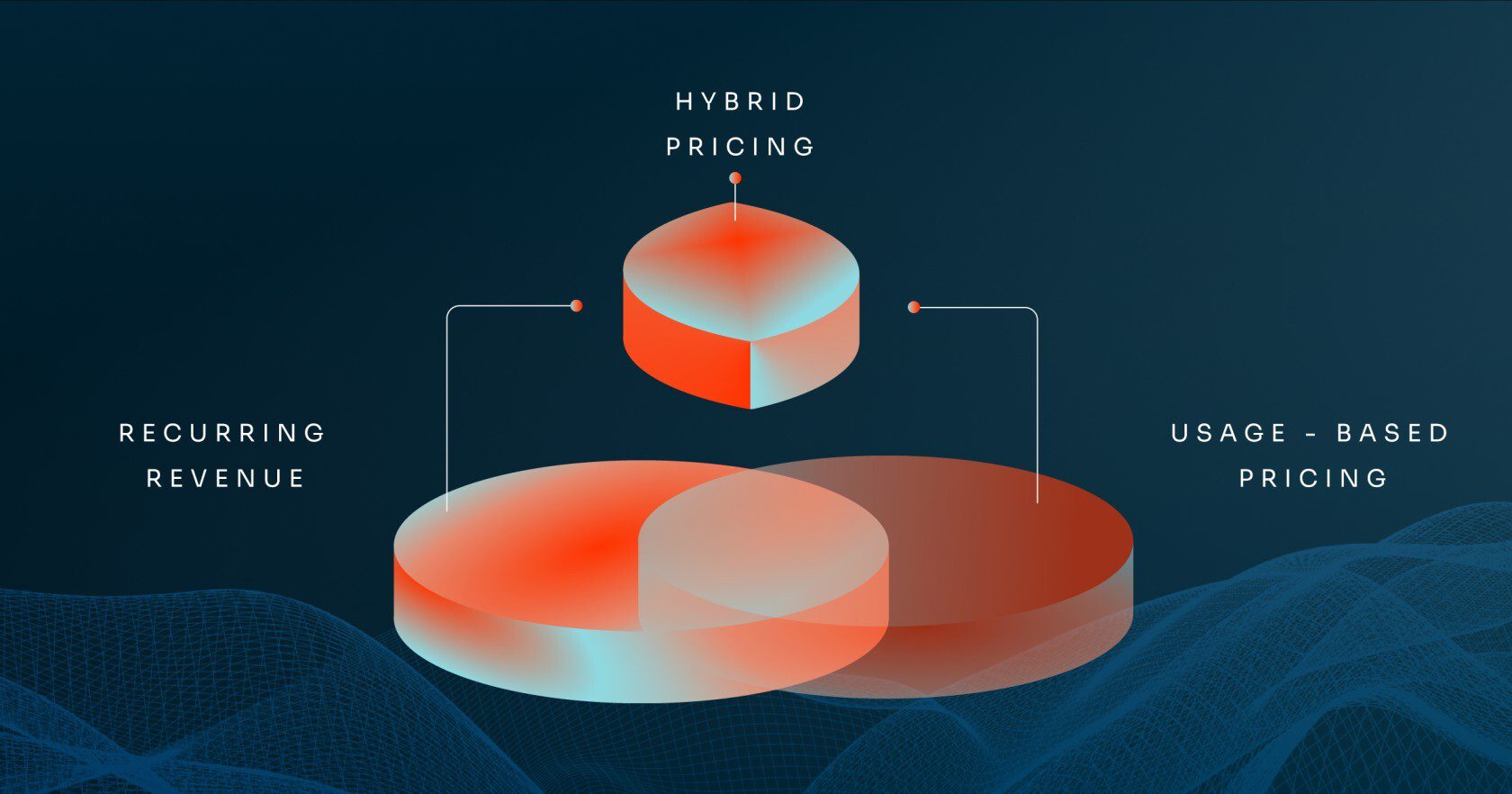When life gives lemons, subscription companies might create a monthly box of lemon-themed goodies—because why sell just one lemon when you can offer a whole experience?
The COVID-19 pandemic presented challenges for businesses worldwide, but subscription-based companies found intelligent ways to not just survive but thrive. As demand for cloud applications grew and competition increased, these companies introduced creative pricing models to make their services more accessible. Media companies shifted from relying solely on ad revenue to adopting subscriptions as a key strategy, and businesses like Pret a Manger launched successful subscription loyalty programs.
In 2024, we’re in a new phase of subscription pricing, influenced by advancements in AI, automation, and flexible applications, along with longer sales cycles. Hybrid pricing models are becoming more popular as businesses aim to retain customers, encourage use, and remain profitable in a changing market.
Why Are Standard Pricing Options Struggling?
Pricing models typically fall into two types:
- Fixed cost pricing: Provides predictable, transparent pricing, such as subscription tiers or seat-based models, where costs are tied to the number of users or features. Customers know exactly what they’ll pay, offering clarity and simplicity.
- Variable cost pricing: Allows customers to scale usage freely, with costs tied to the rate per unit of usage (e.g., transactions or data storage). While the total bill varies, customers only pay for what they use, and businesses benefit from increased usage.
Though both models can support revenue growth, relying solely on one creates challenges in today’s market where customers want to control costs and businesses seek to increase revenue.
The Era of AI, Automation, and Headless Apps
Automation and headless systems are challenging traditional seat-based pricing models. With APIs and AI, customers can increase productivity without needing more software licenses. Defining a “user” becomes harder, making seat-based pricing less effective in capturing value.
AI monetization adds further complexity, requiring companies to attract new users, scale usage to improve the accuracy of AI models and find ways to monetize without eroding profits.
(S)lower Sales Conversions Due to Commitment Inertia
While asking for long-term revenue commitments benefits growth projections, it can slow deal closures.
When you require customers to agree to a longer-term contract, the Total Contract Value (TCV) increases, leading to more resistance, requests for discounts, and delays in decision-making.
Sticker Shock and Invoice Uncertainty
With variable pricing models, customers often can’t see how much they’ll owe at the end of the month unless they can track their usage precisely.
When usage spikes, these pricing models can have unexpected downsides. While increased use is a positive sign of your product’s value, it can also lead to surprisingly high invoice amounts, resulting in difficult conversations with customers.
Depreciating Product Value Perception
Pay-as-you-go (PAYG) models are easy for customers to scale down or drop, leading to disengagement. Without a fixed cost, customers may overlook the product’s value. This can lead to your product being just another tool in their tech stack.
Hybrid pricing models, combining fixed and usage-based components, align pricing with value while offering predictability, ensuring customers stay engaged and finance teams remain happy.
Before exploring how hybrid pricing can address acquisition, delivery, and retention challenges, let’s define what a hybrid pricing model is.
What Exactly Is a Hybrid Pricing Model?
In simple terms, a hybrid pricing model blends two or more different pricing methods. This approach leverages the strengths of each method while minimizing the drawbacks of any single model. Here’s how:
Offering Controlled Upgrades for Conscious Customers
Price-sensitive users often shy away from features they haven’t purchased, and rigid tiered pricing adds another layer of friction by asking to upgrade to explore certain features. This structure can prevent partial upgrades and hinder the adoption of additional features, especially in multi-product offerings.
Hybrid pricing adds flexibility, encouraging customers to try new features or products without paying upfront and opening up new revenue streams.
Monetizing Along the Growth Curve
A rigid one-size-fits-all pricing model may not suit every customer’s growth path. For example, a text-marketing platform with tiered plans could frustrate users if it cuts off their ability to send more texts once they reach their usage quota.
By charging an extra rate for usage beyond the quota, the business continues supporting customers, avoids forced upgrades, and lets them grow at their own pace while generating additional revenue.
Monetize Stationary Usage-Based Customers
Onboarding customers, whether usage-based or subscription-based, requires significant effort and resources from various teams. Even if customers stop using the product, maintaining their data still incurs costs, skewing CAC: LTV ratios, and and leaving you with little to show for the effort.
To offset this, add a base subscription or maintenance fee to your usage-based model. This approach helps recover some of the revenue that might otherwise be lost and supports your business’s financial stability.
Drive Product Value for On-The-Fence Customers
Usage-based pricing can sometimes lead to customers scaling down their usage. While these customers aren’t exactly churning, they also don’t contribute significantly to revenue growth. Without a financial commitment, they might not feel as motivated to find value in the product.
By combining a fixed fee with usage-based pricing, you encourage deeper engagement and long-term value discovery. A minimum commitment also filters out less serious users, attracting dedicated adopters who are more likely to benefit from your platform.
Help Drive Customer Loyalty on Moving Upmarket
As you move upmarket, more stakeholders—like finance and procurement—scrutinize purchases. A subscription model provides clear benefits for these stakeholders. It offers predictability, accountability, and standardized budgeting. Adding variable charges allows you to capture revenue from small-scale usage before customers are ready for an upgrade.
Examples of Growth-Stage Companies Using Hybrid Pricing
Now that we know the benefits of a well-thought-out hybrid pricing model, let’s examine how some SaaS companies have implemented it.
Twilio’s Committed Revenue Layer to a Winning Pay-As-You-Go Model
Programmable communications platform Twilio is the crème de la crème of SaaS businesses that have found success with usage-based pricing.
Twilio uses volume pricing to give customers the advantage of reduced costs as they scale while incentivizing those who commit to a certain usage band with discounts. This is a good balance of the flexibility of the PAYG model without losing the stability of a subscription model with minimum commitment.
Intercom’s Hybrid Pricing Approach in the AI Age
Intercom introduced ‘Fin AI’, an AI-powered chatbot, to enhance its customer service offerings. This addition has led Intercom to adopt a hybrid pricing model that combines seat-based pricing with usage-based elements.
Intercom’s pricing challenges:
- Offering Fin AI as a free service could lead to revenue loss and higher operational costs. Seat-based pricing undervalues AI’s ticket deflection and automation capabilities.
- For human customer service agents, consumption-based pricing could lead to undercharging customers.
Intercom’s hybrid pricing solution:
- The seat-based subscription remains for human agents, maintaining the core structure.
- Usage-based pricing charges customers based on the volume of AI interactions or tickets handled, ensuring that value is captured proportionally to AI performance.
By pricing and packaging different value metrics within the same product, Intercom effectively maximizes revenue growth while also providing the flexibility of the pay-as-yo-go model where it makes sense.
Evolving Your Pricing Model for Hybrid Use Cases
Regardless of your current business or revenue model, your pricing strategy needs to align closely with your packaging. To help your customers succeed with your pricing, you must first ensure they understand your value.
Pricing Adjustments: Small Changes for Big Results
Keeping the core features of your current pricing plan intact might seem like the easiest route, but it’s not always straightforward. Tracking and billing based on usage can get complicated, especially when trying to blend a stable pricing model with a more unpredictable one.
In SaaS, costs aren’t just about production. They often include variable expenses like implementation time, custom features for specific customers, and the actual use of your service. This means pricing isn’t just about adding a premium to your cost—it’s also about figuring out the right balance between what your customers are willing to pay and what it costs you to provide the service.
To get this right, you need to understand what works and what doesn’t. A gradual approach is often best. Instead of making abrupt changes, consider running pricing experiments to see what resonates with your customers.
Here are a few methods to test new pricing ideas:
- A/B testing: Compare your new pricing models with the old ones to see which performs better.
- Controlled experiments: Adjust current plans slightly and offer them to a small group of new customers.
- Discount trials: Experiment with discount rates or coupons to see how they affect customer conversion and margins.
- Packaging changes: Test how altering which features are included in each pricing tier impacts customer interest and expansion
Making minor adjustments and running experiments in parallel will help you gather valuable insights and better understand the impact of your pricing changes.
Chargebee simplifies this process by allowing businesses to test and analyze various pricing models. It helps you learn what your customers value and how they respond to different pricing strategies. Plus, Chargebee Entitlements lets you manage feature access and adjust pricing packages directly from the platform—no coding or engineering needed.
Streamline Your Shift to Hybrid Pricing
Switching to a hybrid pricing model is an exciting opportunity. It’s a chance to refine your pricing strategy, engage with your customers in meaningful ways, and reinforce the value of your product or service.
With Chargebee’s revenue growth platform, this transition is smooth and straightforward. Our platform allows you to experiment with new pricing strategies and make changes effortlessly. Adjust individual values or entire models and manage feature access with just a few clicks—no technical expertise is needed.
Plus, you can implement these changes without disrupting your current customers. Our system handles price grandfathering and lets you start collecting revenue almost immediately.

